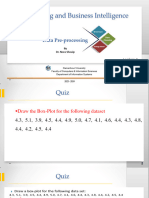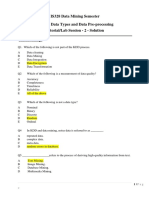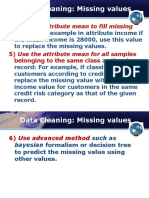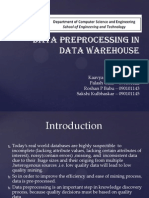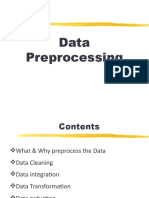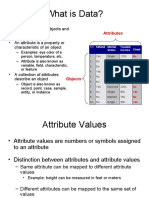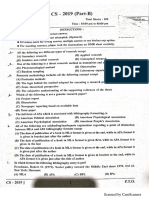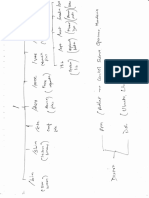0% found this document useful (0 votes)
169 views1 pageAssg 2 Pre-Processing
This document contains 7 questions about data analysis concepts and techniques. Question 1 defines key terms like data cleaning, transformation, reduction, binning, and outlier detection. Question 2 asks to compute the median of grouped data. Question 3 analyzes age data, finding mean, median, mode, and commenting on modality. Question 4 has subparts about smoothing age data using bin means and determining outliers. Question 5 covers normalizing data using min-max and z-score normalization. Question 6 applies normalization techniques to an age value. Question 7 involves partitioning sorted data into bins using equal-frequency and equal-width methods.
Uploaded by
trupti.kodinariya9810Copyright
© © All Rights Reserved
We take content rights seriously. If you suspect this is your content, claim it here.
Available Formats
Download as PDF, TXT or read online on Scribd
0% found this document useful (0 votes)
169 views1 pageAssg 2 Pre-Processing
This document contains 7 questions about data analysis concepts and techniques. Question 1 defines key terms like data cleaning, transformation, reduction, binning, and outlier detection. Question 2 asks to compute the median of grouped data. Question 3 analyzes age data, finding mean, median, mode, and commenting on modality. Question 4 has subparts about smoothing age data using bin means and determining outliers. Question 5 covers normalizing data using min-max and z-score normalization. Question 6 applies normalization techniques to an age value. Question 7 involves partitioning sorted data into bins using equal-frequency and equal-width methods.
Uploaded by
trupti.kodinariya9810Copyright
© © All Rights Reserved
We take content rights seriously. If you suspect this is your content, claim it here.
Available Formats
Download as PDF, TXT or read online on Scribd
/ 1









